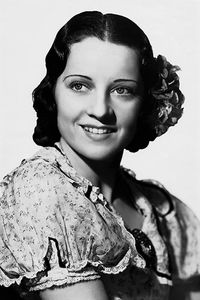Lucrecia Ana Úbeda Pubillones, a mesmerizing Spanish-born thespian and dancer, emerged into the world with a pair of striking green eyes that would eventually become a defining feature of her captivating persona. The early years of her life were characterized by a series of international relocations, commencing with a significant move to New York when she was just a tender two years old. This initial relocation marked the beginning of a lifetime of travel and exposure to diverse cultural influences, which would ultimately shape her unique perspective and artistic expression. As she grew, Lucrecia spent considerable time in Spain, immersing herself in the rich cultural heritage of her motherland. Later, her family's travels took her to Havana, Cuba, where she spent a formative two-year period at a Catholic convent, an experience that would likely have a profound impact on her spiritual and artistic development.
As Lucrecia entered the pivotal stage of her adolescence, her family made the decision to relocate to the vibrant city of New York, where she embarked on a remarkable journey in the world of vaudeville at the tender age of sixteen. With her star quickly rising, she captivated audiences across the city, earning the nickname "La Flor de España" and showcasing her impressive vocal and dancing abilities at the iconic Roxy Theatre and in various nightclubs. As her fame continued to soar, Lucrecia chose to reinvent herself, adopting the stage name Luana Alcañiz. She then formed a dynamic partnership with the talented dancer Juan Puerta, who would later become her husband.
Luana Pajaro's journey in the world of cinema began in 1930 when she signed a groundbreaking contract with the renowned Fox film studio, securing a leading role alongside two of Hollywood's most iconic legends, Humphrey Bogart and Victor McLaglen, in the action-packed adventure film "A Devil with Women". This significant milestone marked the beginning of a prolific career, as Luana went on to star in a series of American-made Spanish language films, released by prominent studios such as Warner Brothers/First National and Columbia.
Her filmography would later include the critically acclaimed "La dama atrevida" and the thought-provoking "El pasado acusa", cementing her status as a talented and versatile actress in the industry.
As the passage of time unfolded, Luana persisted in her career as a freelance actress, taking on various roles in a multitude of productions that traversed the geographic boundaries of Cuba, Venezuela, and Mexico. Her impressive repertoire during this period encompassed an array of notable credits, including but not limited to the notable films It Happened in Havana, Alma llanera, and Sol y sombra.
Luana's professional journey eventually led her to return to the shores of her homeland, Spain, where she ultimately established her permanent residence in the vibrant city of Madrid.
Luana's acting career, which had spanned numerous decades and traversed the farthest corners of the globe, ultimately came to a close with her retirement from the industry. Although she made sporadic appearances in films as a supporting actress during this period, she eventually bid farewell to the spotlight. However, Luana did briefly re-emerge from her retirement to take on a small yet significant role in the monumental film production of Doctor Zhivago. This cinematic endeavor, which was brought to life on a specially constructed set situated just outside the city of Madrid in 1965, marked the culmination of Luana's illustrious career, a career that had been marked by numerous memorable performances and a wide-ranging scope that had taken her to the most distant and exotic locations.















